Rava Upma | Suji Upma | Semolina Upma
Prepared By Lakshmi Aparna
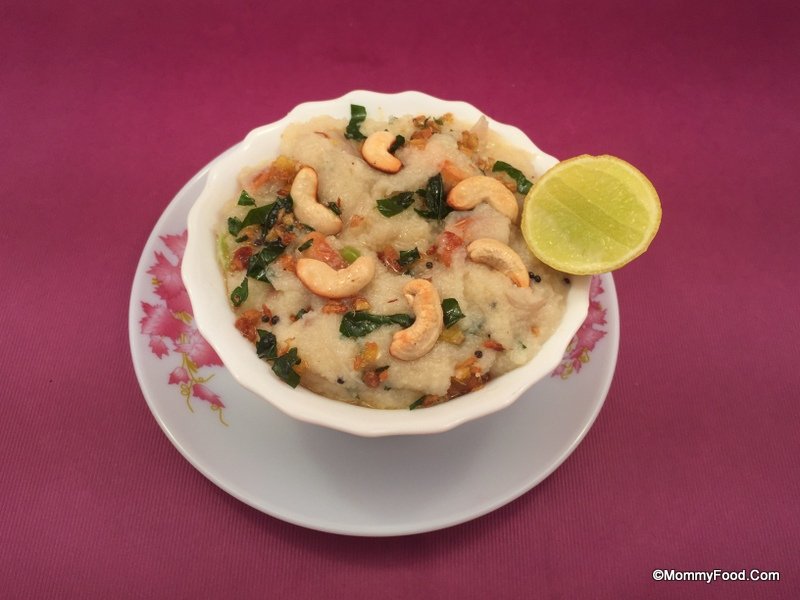
Introduction
Rava Upma, also known as Suji Upma or Semolina Upma, is a classic South Indian breakfast that is not only delicious but also easy to prepare. This dish is made from Bombay rava (semolina), which is lightly roasted and cooked with spices, onions, and a variety of other flavorful ingredients. It’s quick, filling, and pairs wonderfully with chutneys or pickles. In this recipe, I'll show you how to make a simple, traditional rava upma with step-by-step instructions and images for your convenience.
Preparation time: 5 minutes
Cooking time: 15 minutes
1 bowl measuring: 250 ml
Serves: 3-4
Course: Breakfast
Quick Navigation:
- Ingredients
- Procedure
- Step 1: Roasting the Rava
- Step 2: Preparing the Tempering
- Step 3: Sautéing the Vegetables
- Step 4: Adding Salt and Water
- Step 5: Cooking the Rava
- Step 6: Final Cooking and Serving
- Conclusion
Ingredients
Bombay rava (semolina, suji): 1 bowl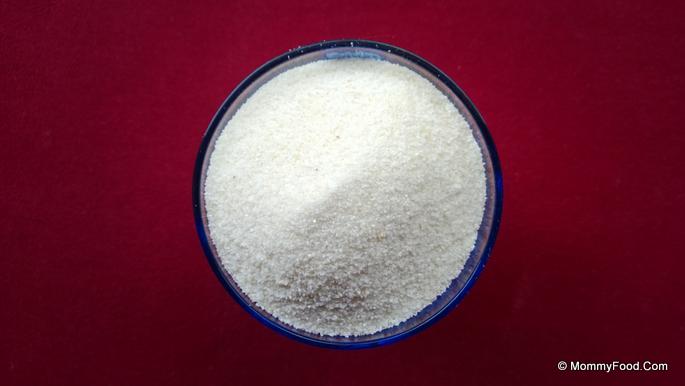
Onion, green chillies, chopped ginger, curry leaves (ullipaya, pachimirapa, allam, karivepaaku) : 1 medium, 5, 2 tbsp, few respectively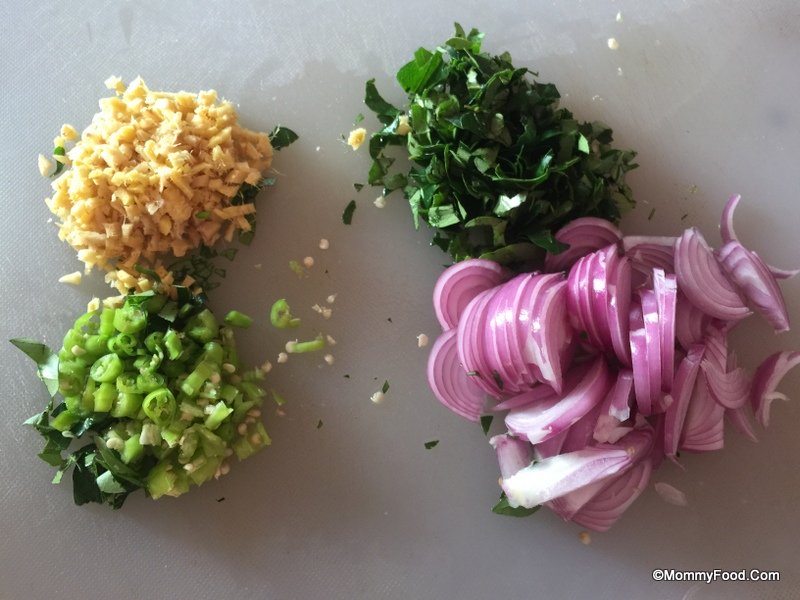
Cashews (jeedipappu), bengal gram (senaga pappu), urad dal (Minapappu), mustard seeds (aavalu), dry red chilly (endumirapa) : 1 tbsp each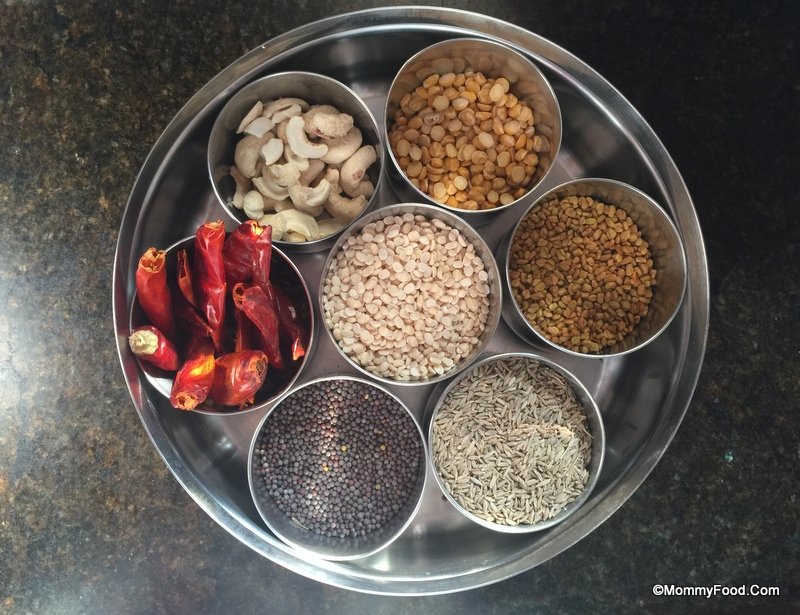
Water: 4 bowls
Salt: As required
Oil: 2-3 tbsp
Ghee: 1-2 tbsp
Procedure
Step 1: Roasting the Rava
Roast rava by stirring it often in a pre-heated pan for 2-3 minutes on medium flame, until it releases a good aroma. Note: Rava should not turn brown.
Step 2: Preparing the Tempering
Heat 2-3 tbsp of oil in a kadai, sauté 1 tbsp Bengal gram and 1 dry red chili on medium flame.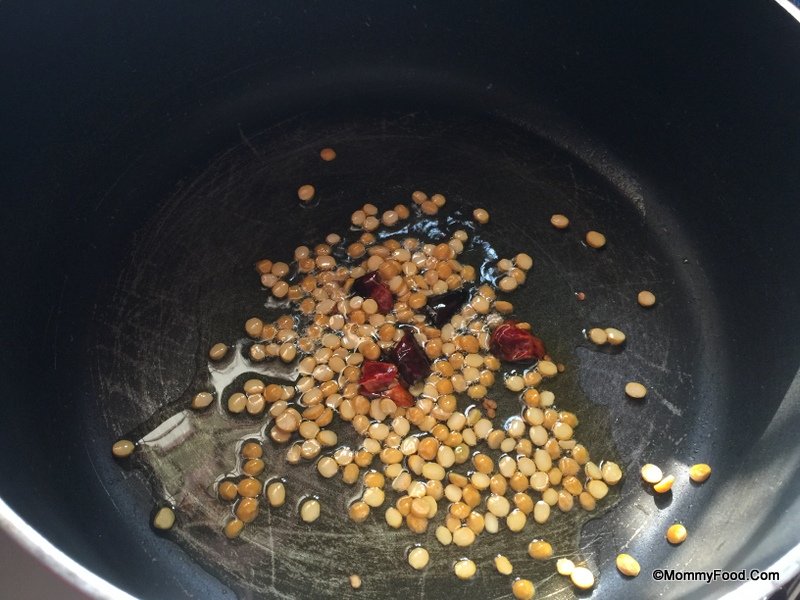
Add cashews next.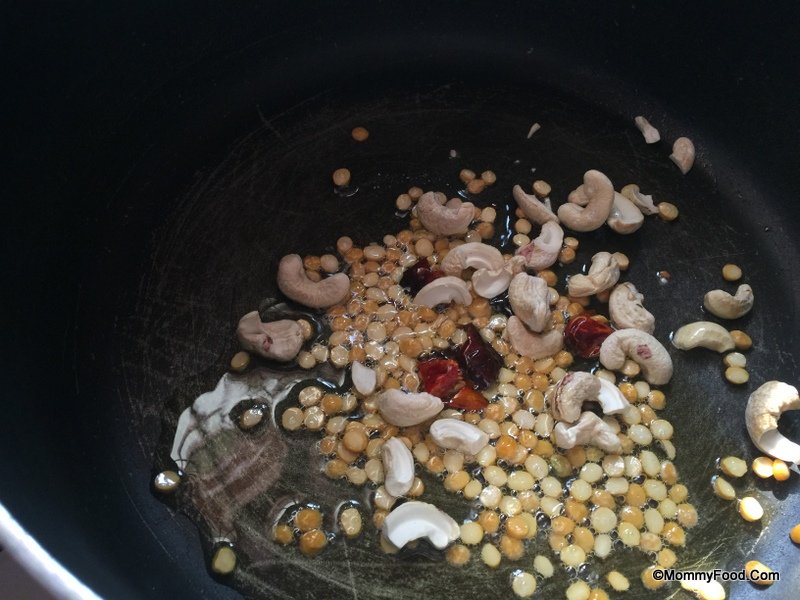
Then add 1 tbsp urad dal.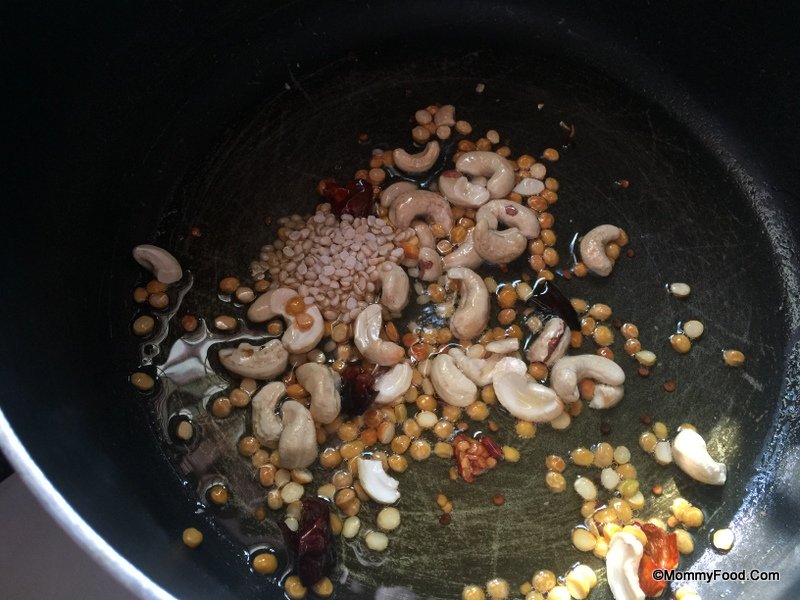
Lastly, add 1 tbsp mustard seeds.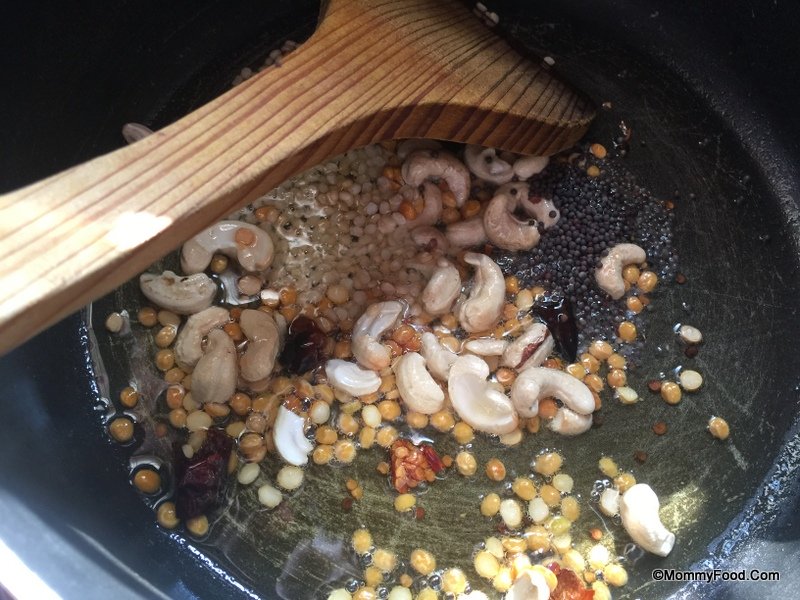
When you hear the mustard seeds start crackling, add the curry leaves.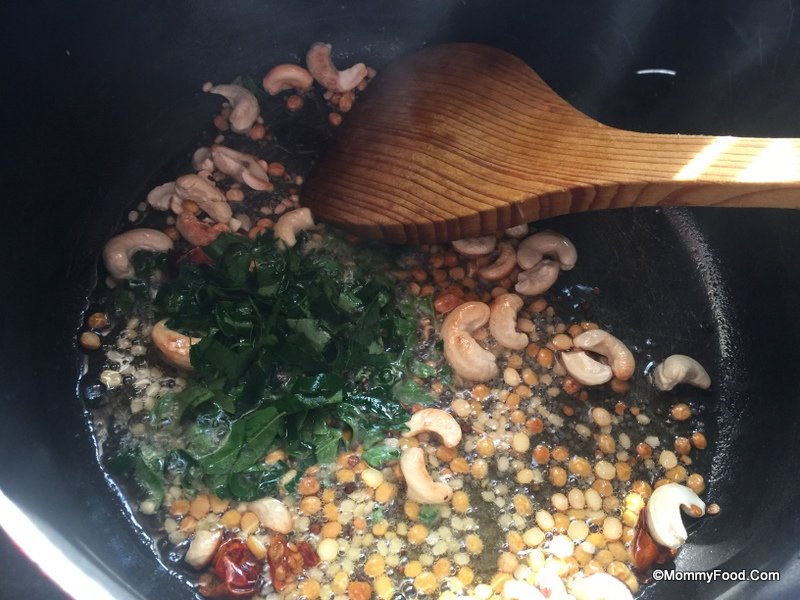
Step 3: Sautéing the Vegetables
Add onion slices and sauté for a minute on medium flame.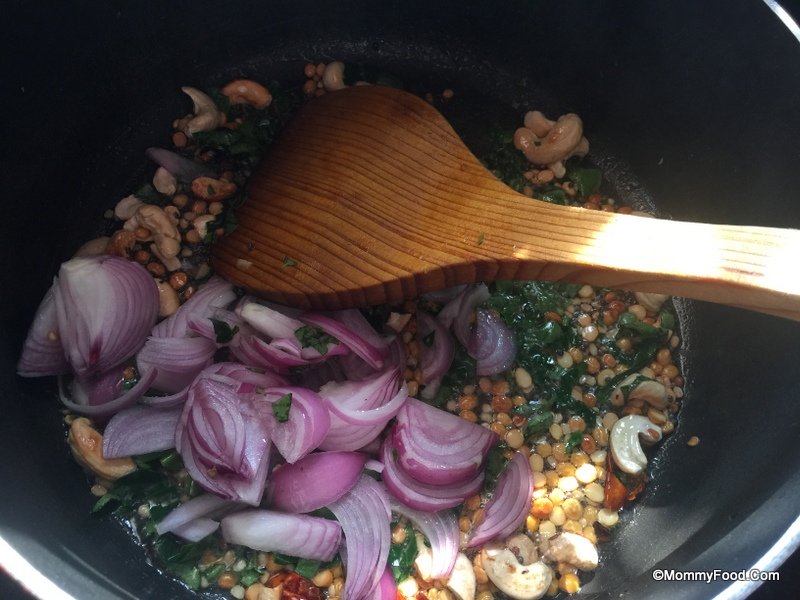
Add green chilies and ginger pieces and continue to sauté.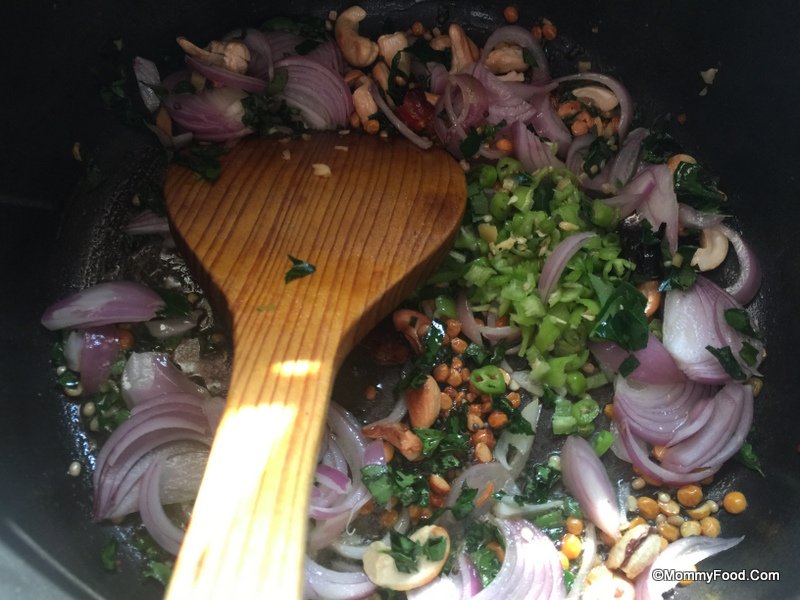
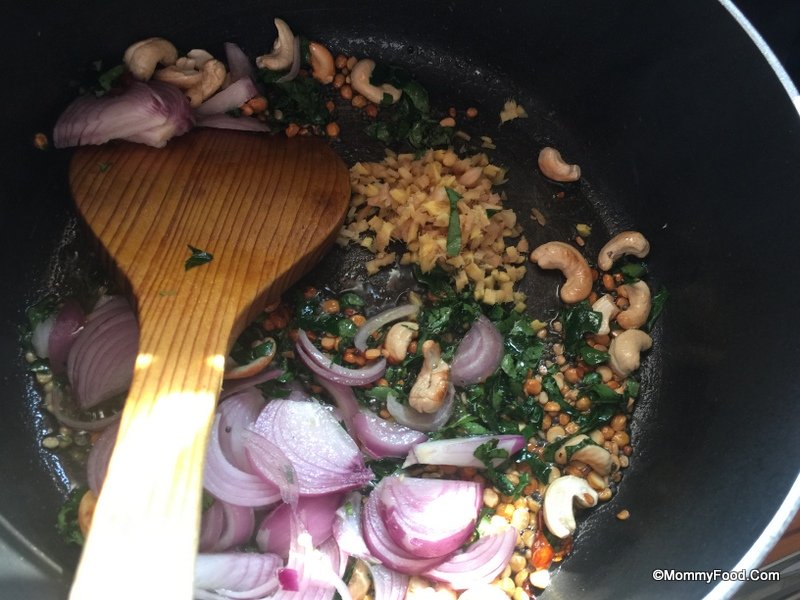
Step 4: Adding Salt and Water
Add the required amount of salt.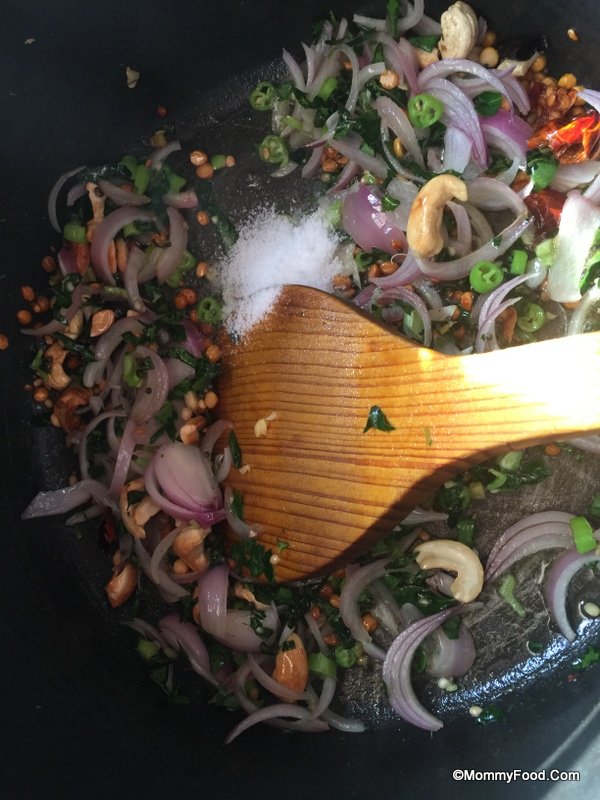
Add 4 bowls of water to the mixture. Taste the water and adjust salt if needed. If it’s too salty, you can add more water or rava.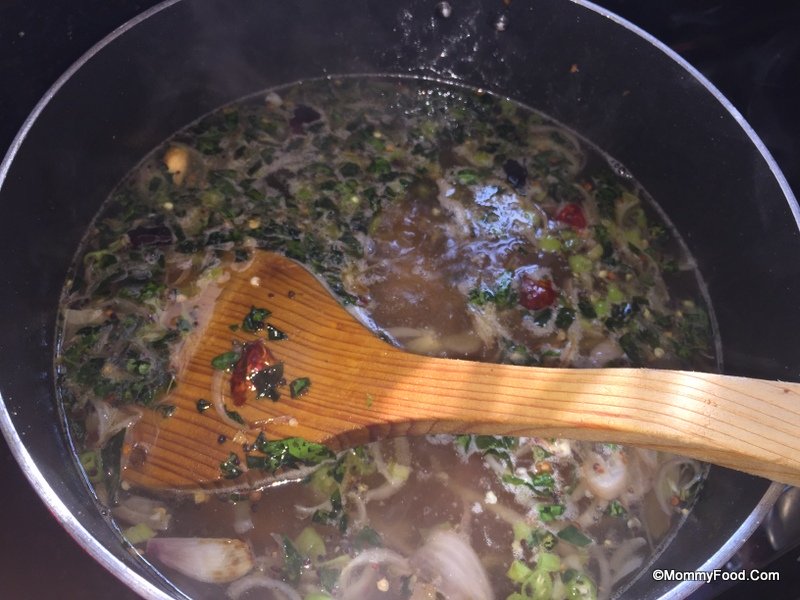
Step 5: Cooking the Rava
When the water starts to boil, slowly add the roasted rava while continuously stirring to avoid lumps. Keep the flame high during this step.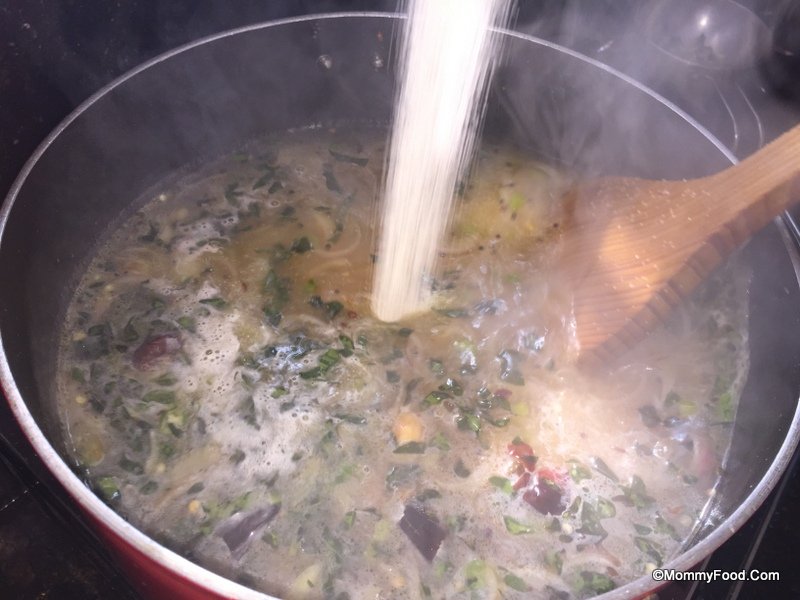
Let it cook for 3-4 minutes while stirring to ensure the upma doesn’t stick to the bottom.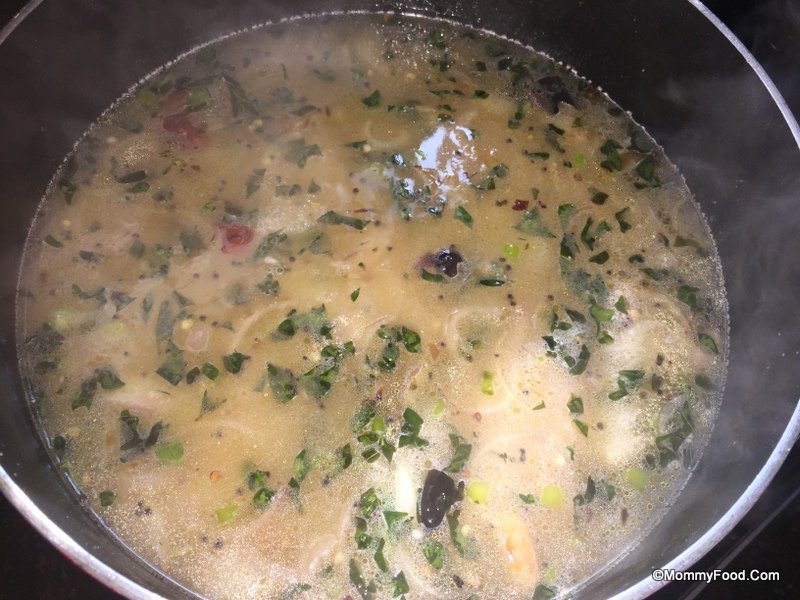
Step 6: Final Cooking and Serving
Cover the pan with a lid and let it cook on low flame for 2 minutes.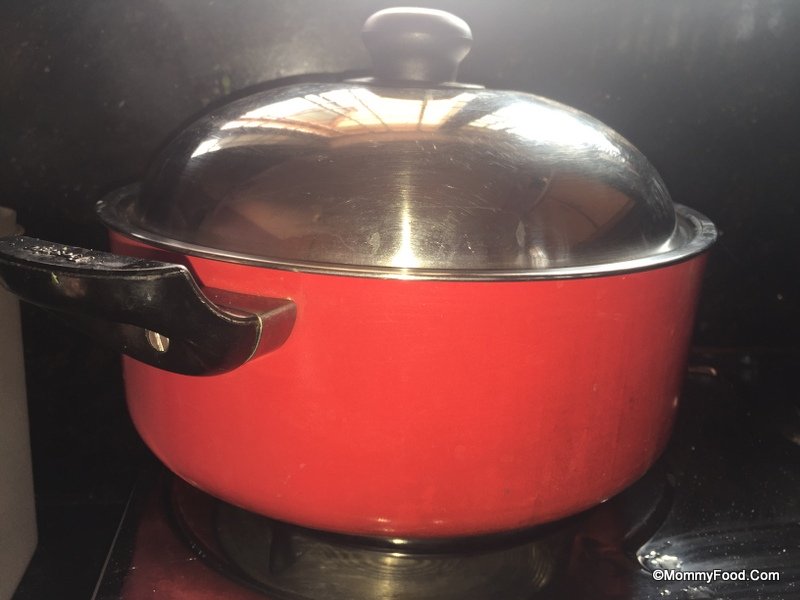
After 2 minutes, open the lid, stir it thoroughly, and let it cook for an additional minute on medium flame.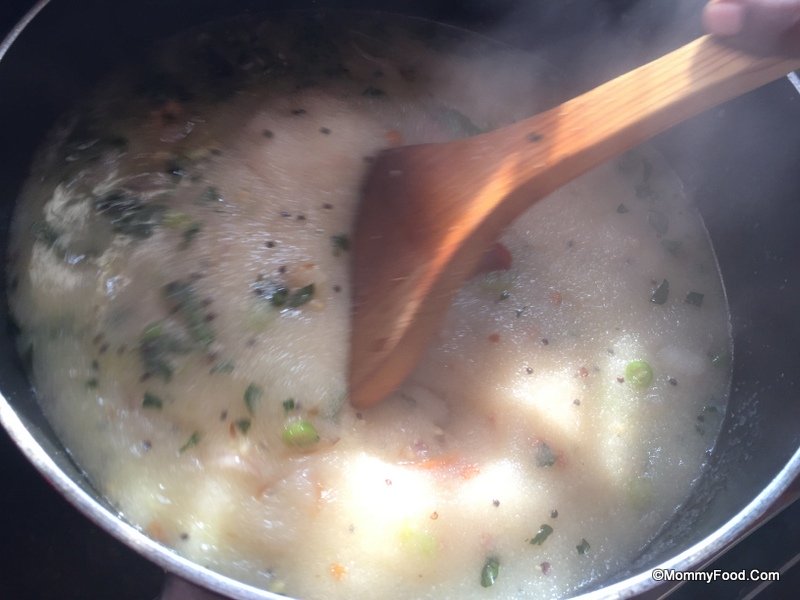
Turn off the flame and add a little ghee for extra flavor before serving.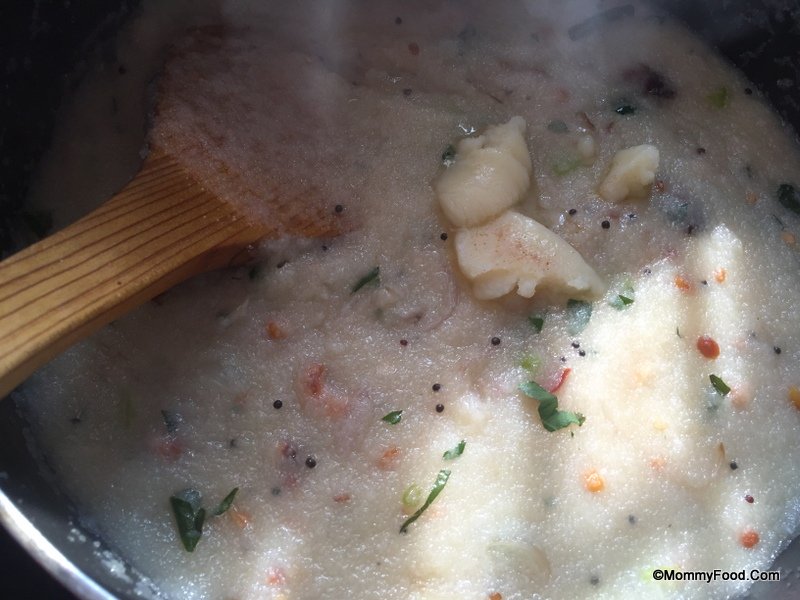
Hot and tasty rava upma is ready to serve!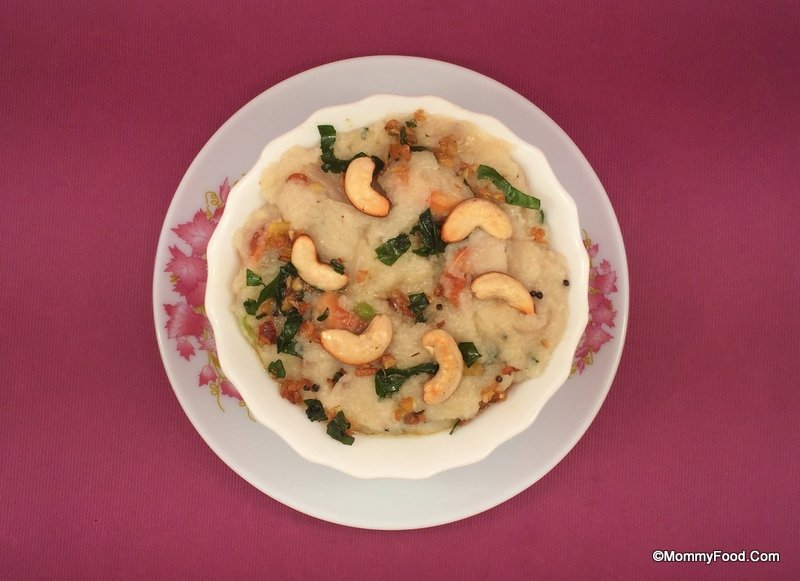
Enjoy it with coconut chutney, lemon pickle, or any of your favorite accompaniments such as coconut chutney, nalla karam, or kobbari karam.
Conclusion
Rava Upma is a versatile and quick breakfast option that can be prepared with minimal ingredients in a short amount of time. Whether you serve it with coconut chutney, pickles, or enjoy it plain, it always hits the spot. This dish is perfect for those busy mornings when you want something warm, filling, and comforting. Now that you've mastered this simple yet flavorful recipe, you can easily make it a regular part of your breakfast routine. Give it a try, and you'll see why it's such a beloved dish in many Indian households.
Like our recipes? You want us to do more?
Keep us running! Buy from our affiliate store:
US | Amazon Best Sellers & Deals
India | Amazon Best Sellers & Deals





Comments powered by CComment